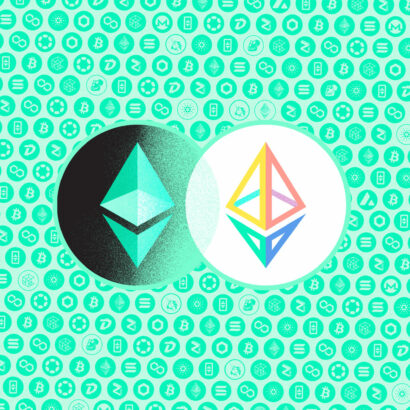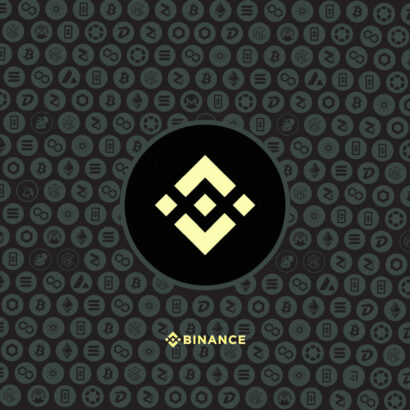You’d be hard-pressed to get a car’s engine going without some kind of fuel. Unless you’re willing to push it the entire way (still counts as fuel), without gas or an electric charge you won’t get from point A to point B. And unfortunately — each trip requires that fuel to keep the engine running.
You understand how a car works and you also understand the basics of fuelling transactions on a blockchain.
In crypto, gas and/or fees help incentivize miners and validators to put transactions through, immortalizing them as part of a block of data and added onto the blockchain.
A common validation method — Proof-of-Work which is used by Bitcoin (and Ethereum 1.0) — involves solving very complex mathematical problems, which in turn takes specialized computer hardware and large amounts of electrical energy.
Ethereum currently uses a variation of Proof-of-Work, where the transaction fees are called Gas. Given the choice, a miner or validator will look to process the data that offers the highest fee or offers the most gas to the miner.
Ethereum is actively moving towards a Proof-of-Stake model in the near future, where validators will put up their own Ethereum as collateral to ensure that fraudulent blocks aren’t verified onto the blockchain.
Transaction fees like gas runs the crypto-world.
Their price is affected by which blockchain is being used, the current price of the crypto, the amount of congestion on the network, and the complexity of the transaction itself.
Gas & Transaction Fees
Note: While gas is a transaction fee, not all kinds of transaction fees are gas.
Gwei
Gas is first referenced by Ethereum’s co-founder Vitalik Buterin in the Ethereum whitepaper. It is useful as a distinction between the cost of computation, separate from the price of a cryptocurrency. Gwei became a standardized gas term to refer to a nano-fraction of a cryptocurrency (or 0.0000000001 of a whole).
Ethereum Gas Fees
On Ethereum, Gas is the cost required for a single transaction to go through. The cost of gas is calculated depending on the current usage of the network as well as the complexity of your transaction. Ethereum lets users interact with smart contracts — algorithms that perform a specific function — there are way more actions than sending Ethereum to another address (i.e. staking, yield-farming, minting non-fungible tokens).
Gas can incentivize validators or miners to help move along your transaction, think of them as gas stations. If others are willing to pay more for gas than you are, the gas station will fuel them up and run their transactions first.
One Ethereum transaction takes 148.26 kWh, enough to power a US household for 5 days.
Calculating Gas
Gas fees are denoted in Gwei, a unit consisting of 0.0000000001 ETH.
The first part of determining your gas fees involves calculating the cost of a certain transaction. Perhaps a smart contract has three steps, with each step requiring 45 gas to run. So far, this costs us 135 gas. Now if the average gas price at the moment is 30, you can multiply the amount of gas you need by the price to get the total gas fee of 0.00000405.
But gas has some volatility, meaning that the price might go up or down in a matter of minutes. That’s why transactions also set up a limit (the maximum amount of gas you are willing to pay). If your gas limit is higher than your gas fee, it is returned to you afterward. However, if you run out of gas during the transaction, you’re out of luck! The miners still get compensated for their computations efforts and you lose your gas payment. You need to pay even more gas to get the transaction to go through.
Comparing fees using different cryptocurrencies
Bitcoin Transaction Fees
While Bitcoin doesn’t use a gas ecosystem for transaction fees, its fees remain an important part of the validation process. Computers (nodes) act as validators and miners for Bitcoin, competing to solve ever-more computationally intensive math problems. Think of a high school calculus-infused Freddy Krueger nightmare. Since the underlying blockchain is limited in how many transactions are accepted for each block, there are times of congestion and competition.
Bitcoin requires on average 1702.24 kWh per transaction, enough to power a US household for 58 days.
The cost of Bitcoin transaction fees may be as low as 2 USD during off-peak times but can spike up to 60 USD.
A new cryptocurrency resulted from a Bitcoin fork, called Bitcoin Cash (BCH), which solved this transaction problem by increasing the size of the blocks. More Bitcoin Cash transactions can be processed at once within each block, meaning fees are reduced to less than $0.01.
Binance Smart Chain Transaction Fees
Compared to Ethereum, average transaction fees on the Binance Smart Chain (BNB) are much lower. To put it in perspective, 1 Gwei is equivalent to 0.000000001 BNB.
This crypto is worth less than ETH, and can handle a lot of simultaneous transactions – the average fee comes out to around 20 Gwei or around $0.01 on a $300 transaction. Since the blockchain can handle a lot of transactions and is far from congestion, there is little competition or need for offering more gas.
Related: Binance Smart Chain 101
Solana Transaction Fees
This blockchain is going to offer tough competition for Ethereum, with the ability to process more than 1000 transactions per second with an average cost of around $0.00025 per transaction.
Related: What’s so Great About Solana?
Dogecoin Transaction Fees
The popular meme coin is an ERC-20 compliant token, meaning it is created using the Ethereum blockchain. Due to the increase in popularity and usage, the historic cost of gas has gone way up. On average, a transaction will cost just over 2 DOGE or around $0.66.
Is there value in mining?
With low electricity fees and up-to-date hardware, a Bitcoin miner might make more than 220% in profit in a day. However, this does not factor in the cost of Bitcoin-specific mining hardware that can cost thousands of dollars, meaning it may take a large buy-in and several months before seeing any profits. Though the hardware may be difficult to acquire, Ethereum miners have doubled their profits in 2021, however the difficulty of mining will continue to increase as its phased out for Proof-of-Stake. Ethereum still remains one of the best cryptocurrencies to mine to this day.
Related: Top 10 Mining Platforms
What are Driving Gas Prices and Transaction Costs?
Gas prices are governed by scarcity and geopolitical relationships in the real world. Luckily, gas prices on the blockchain are easier to understand than Middle-Eastern or Sino-Asian politics. Across different blockchains, the same factors drive the cost of gas.
Cost of the Cryptocurrency
Any Bitcoin transaction will pay fees in BTC. Transactions on the Ethereum blockchain pay their fees in ETH. Thus the value of these cryptocurrencies will dictate the Fiat prices of the gas.
Intrinsic Blockchain Characteristics
All blockchains are built differently — meaning some will be able to handle transactions better than others. Bitcoin might be compared to a one-way road, where very few transactions can go through at a given time. Blockchains that can handle even more transactions like Ethereum or the Binance Smart Chain have multiple lanes; more transactions can go through until traffic and congestion slow them down.
Trade Volume
Even a one-way road is efficient when you’re the only one using it. But a one-way road will greatly slow down if fifty people are trying to get from point A to point B at the same time. If trade volume on a blockchain exceeds the number of transactions that can go through at the same time, then gas goes up. Just like in Mad Max, gas becomes a valuable commodity and it will cost you to get your transaction through right away.
Complexity of Transactions
Some road trips are much easier than others. If you want to travel from California to Florida, it will cost you a lot of gas. Similarly, the complexity of a transaction on a blockchain will determine the amount of gas you need for it to go through. Participating in smart contracts will be more expensive than trading or sending crypto.
Gas is Volatile
Predicting the amount of gas you need to pay is hard. If many people are using smart contracts on Ethereum, the gas of simple transactions can jump to hundreds of dollars. Several people have developed tools that help you predict the cost of gas before you go through with a transaction. However, this requires a lot of data and may not work very well because there is so much volatility involved.
Several charts are available from official Ethereum resources that track gas historically as well as at different times of the week. When everyone is asleep, gas decreases allowing you to pass transactions with lower fees. A wallet like MetaMask will show you recommended gas fees for slow, medium, and high-speed transactions. You can change the gas limit in order to further slow down or speed up your transaction.
If you want a more intuitive way to understand gas trends and fees, you can use the Ethereum Transaction Visualizer. Each block is a bus with different gas prices in gwei, with human avatars representing every single transaction. When lots of people are waiting for a bus, it means there is a lot of congestion requiring you to pay more gas to get from point A to point B.
This volatility also makes Decentralized Applications (dApps) difficult. If you add liquidity to a pool regularly, you have to pay a gas fee every time you do so. Every time you withdraw a reward, there is a gas fee. That means if you don’t have a lot of money to start with, gas fees make many decentralized finance applications, or decentralized exchanges (DEXs) costly.
Summary
Gas is the fuel you need to get your transaction from point A to point B. Since every transaction on a blockchain requires validation or verification, it also needs a certain amount of computational power. Miners and validators are rewarded by gas fees for doing this important work, just think of them like gas station employees.
The cost of gas depends on many factors including:
- Cost of the digital asset
- Intrinsic characteristics of the blockchain
- Network congestion
- Trade volume
- Complexity of a transaction
In other words, a journey that requires more fuel will also cost more.
There are many ways to visualize the ever volatile prices of gas but fewer ways to predict them. If you see gas prices are high, consider doing your transaction on a different day. Nobody likes getting stuck in traffic.




